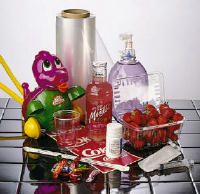Treating and Blending the Fractions
Distillated and chemically processed fractions are treated to remove impurities, such as organic compounds containing sulfur, nitrogen, oxygen, water, dissolved metals and inorganic salts. Treating is usually done by passing the fractions through the following:
- a column of sulfuric acid - removes unsaturated hydrocarbons (those with carbon-carbon double-bonds), nitrogen compounds, oxygen compounds and residual solids (tars, asphalt)
- an absorption column filled with drying agents to remove water
- sulfur treatment and hydrogen-sulfide scrubbers to remove sulfur and sulfur compounds
After the fractions have been treated, they are cooled and then blended together to make various products, such as:
Advertisement
- gasoline of various grades, with or without additives
- lubricating oils of various weights and grades (e.g. 10W-40, 5W-30)
- kerosene of various various grades
- jet fuel
- diesel fuel
- heating oil
- chemicals of various grades for making plastics and other polymers
For more information on the fascinating world of oil refining and petroleum chemistry, check out the links below.
